Black folks have a gift for complicating the stories that Americans like to tell about themselves. Our presence, for instance, makes it hard to accept the notion that the United States was “conceived in Liberty, and dedicated to the proposition that all men are created equal.” It’s a comforting myth and a useful one as well. Abraham Lincoln put it to good use when he spoke those words at Gettysburg, rallying the Union in a time of crisis. But, as history, this foundational myth was undermined by the centrality of slavery in the economic and political life of the new nation.
Our presence complicates other American stories, like the ones that get told about Appalachia. Historian Ronald Eller has pointed out that the region has long been seen as the “other America,” defining what the nation as a whole is not. According to this myth, America is prosperous, while Appalachia is poor. America is modern and progressive, while Appalachia is mired in the past. America is racially and ethnically diverse, while Appalachia is uniformly White, a land of hillbillies and moonshine.
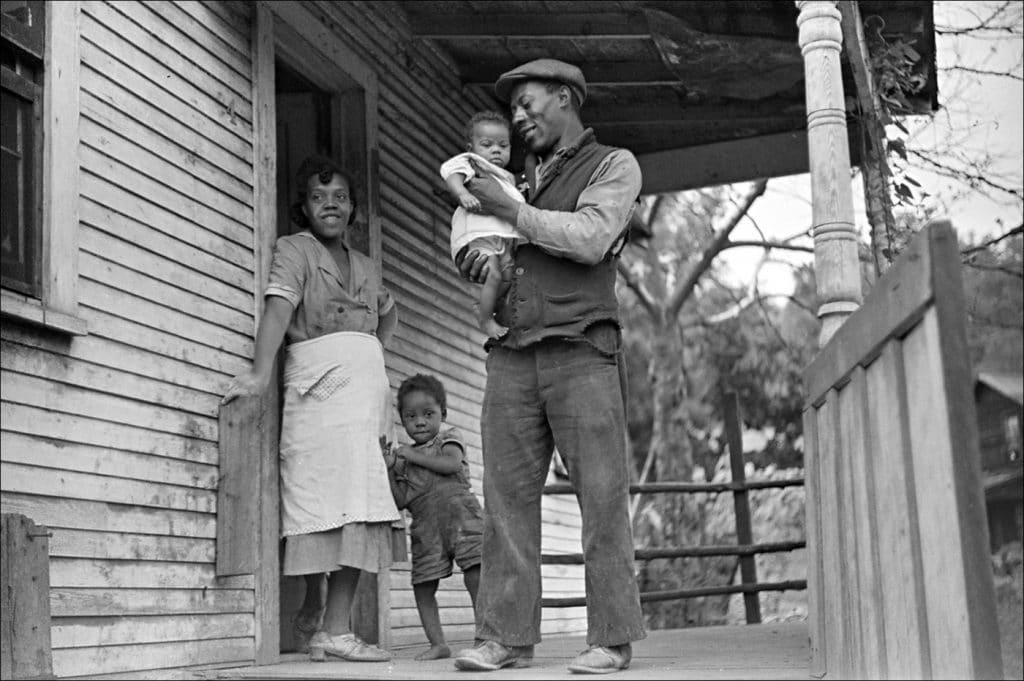
“Coal miner his wife and two of their children. Bertha Hill West Virginia. 1938.”
Photo by Marion Post Wolcott/Farm Security Administration-Office of War Information Photograph Collection Library of Congress.
When someone hears ‘Appalachia,’ the first thing that pops into their head isn’t an African American face, ever. It’s kind of irritating.
—Shaylan Clark (Washington Post interview, 2017)
Myths about Appalachia linger in the national subconsciousness and rise to the surface when politicians and pundits find them to be particularly useful. In the 1960s, for instance, President Lyndon Johnson made Appalachian poverty the face of his War on Poverty, believing that voters would be more willing to support programs that seemed to be aimed at poor White people than poor African Americans.
Recently, myths about Appalachia have been recruited to explain the rise of Donald Trump to the presidency. As historian Elizabeth Catte points out in her important new book, What You Are Getting Wrong About Appalachia, the myths of poverty, backwardness, and homogeneous Whiteness have made it easy to paint Appalachia as “Trump Country.” In the aftermath of the 2016 election, an entire journalistic genre emerged that ignored Trump’s support among White voters of all income levels and in all regions of the country and instead focused on White working-class voters, especially in Appalachia. Somehow, the ignorance and racism of this “other America” had propelled Trump to victory, not the votes of middle-class suburbanites in Michigan, Wisconsin, Florida, and Texas.
The Whiteness of Appalachia is one of its most enduring stereotypes. Black folks, the story goes, live elsewhere. But in fact, African Americans, some of them enslaved, have inhabited the region since the first soldiers and pioneers drove Native Americans off of their land. Catte notes that when coal industry employment was at its height, in the early to mid-twentieth century, African American miners made up “20 to 50 percent of the workforce.” Even today, she writes, more people in Appalachia “identify as African American than Scots-Irish.” Yet the myth of Whiteness is so strong that even well-known Black people from the region—the educator and politician Booker T. Washington, singers Nina Simone and Bill Withers, and writers August Wilson, Nikki Giovanni, and John Edgar Wideman—are rarely associated with it.
Twenty-five years ago, poet and scholar Frank X. Walker, coined the term “Affrilachian.” It was a response to the long history of writing African Americans out of the stories we tell about Appalachia, giving a name to the Black presence in the region and raising its visibility. The term struck a chord and is now widely embraced.

“Sunday in Scotts Run West Virginia. 1935.”
Photo by Ben Shahn/Farm Security Administration-Office of War Information Photograph Collection Library of Congress.
When I imagine our history, I see photographs.
—Elizabeth Catte
Photography, Catte shows, played a crucial role in the creation of the mythology of Appalachia. Many others agree. Appalachian filmmaker Elizabeth Barret once noted that outsiders with cameras “mined images in the way the companies mined the coal.” Too often, the images they made were the ones that myths and stereotypes had prepared them to see—poverty, despair, and a cast of characters that was uniformly White.
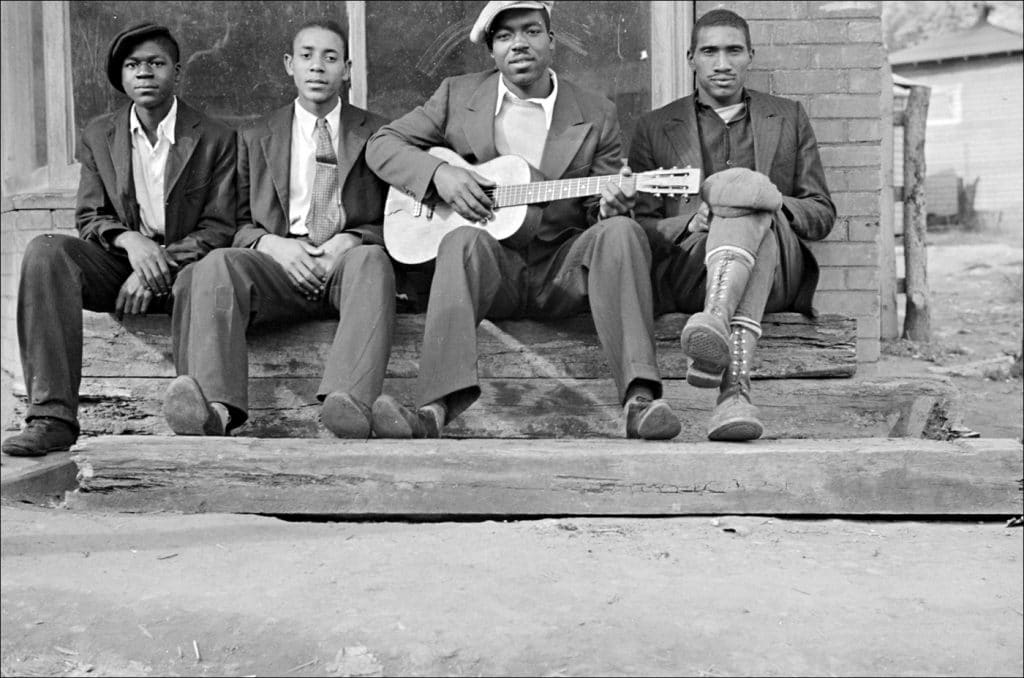
“Untitled. (Scotts Run West Virginia 1935.)”
Photo by Ben Shahn/Farm Security Administration-Office of War Information Photograph Collection Library of Congress.
Some photographers, however, have come to Appalachia with their eyes and minds wide open. Ben Shahn and Marion Post Wolcott were two of the best. Although Shahn is much better known as a painter and muralist, the photos that he made during two brief stints working for the federal government’s now-famous documentary photography project at the Farm Security Administration are among the most significant documents that we have from the 1930s. Wolcott’s career as a photographer, although longer than Shahn’s, also was short. No matter. At the FSA, she still made some of the best and most iconic images of the era.
Neither Shahn nor Wolcott knew very much about Appalachia when they first arrived. But they were both sharp observers of people and society. And if they were burdened by stereotypes, they soon learned to discard them. They were both politically progressive and opposed to racism and segregation, and they shared an openness to and curiosity about African Americans.
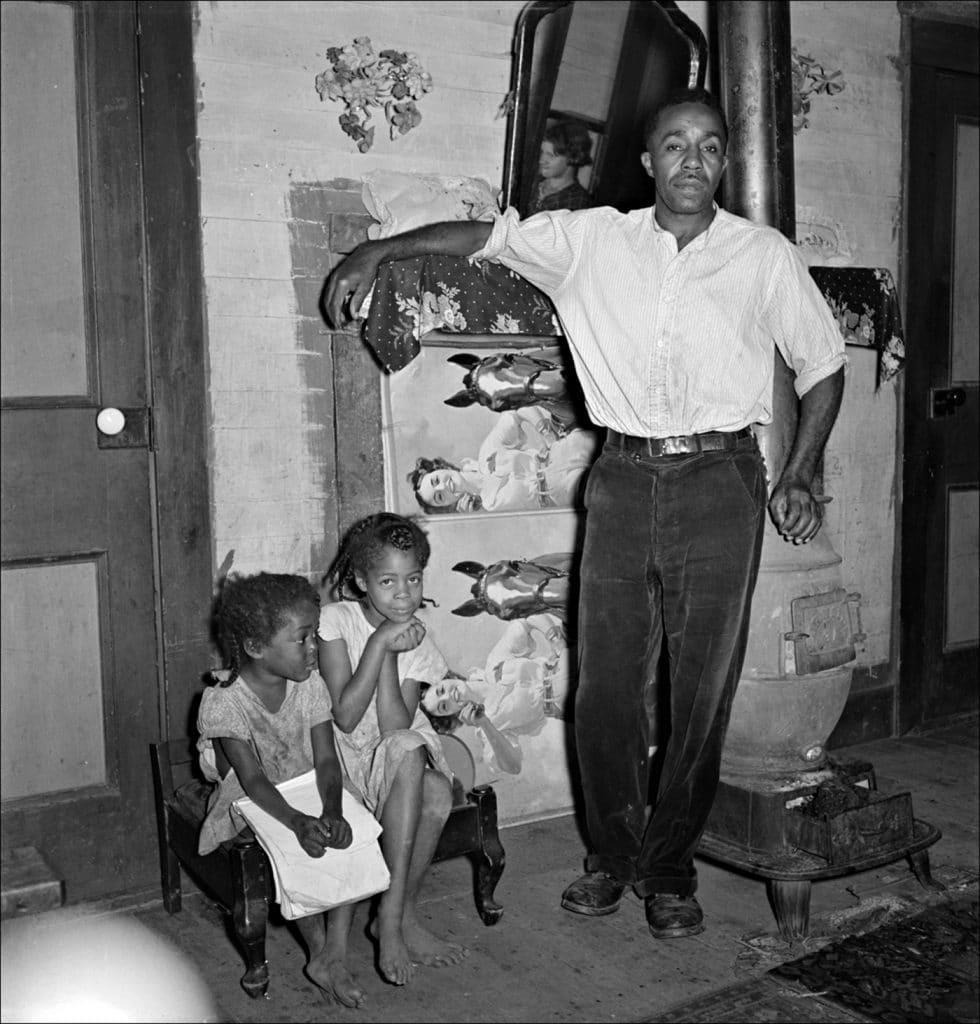
“Coal miner and two of his seven children. He has worked in the mines for about 20 years. Chaplin West Virginia. 1938.”
Photo by Marion Post Wolcott/Farm Security Administration-Office of War Information Photograph Collection Library of Congress.
… my first assignments were very close to Washington. I think one of the first ones, if not the very first, was in the coal fields in West Virginia. That was a very short assignment, of course. And it was a very interesting one, too. I found the people not as apathetic as I had expected they might be. They weren’t too beaten down. Of course, many of them were, but they were people with hope.…
In this article, I’ve selected only photos from West Virginia. That’s in part because it’s the only state wholly within Appalachia, and in part because the images that Shahn and Wolcott made there are so strong. But these photos are only a small sample of the images of Affrilachians that can be found in the FSA archive. A rich history is waiting to be explored.
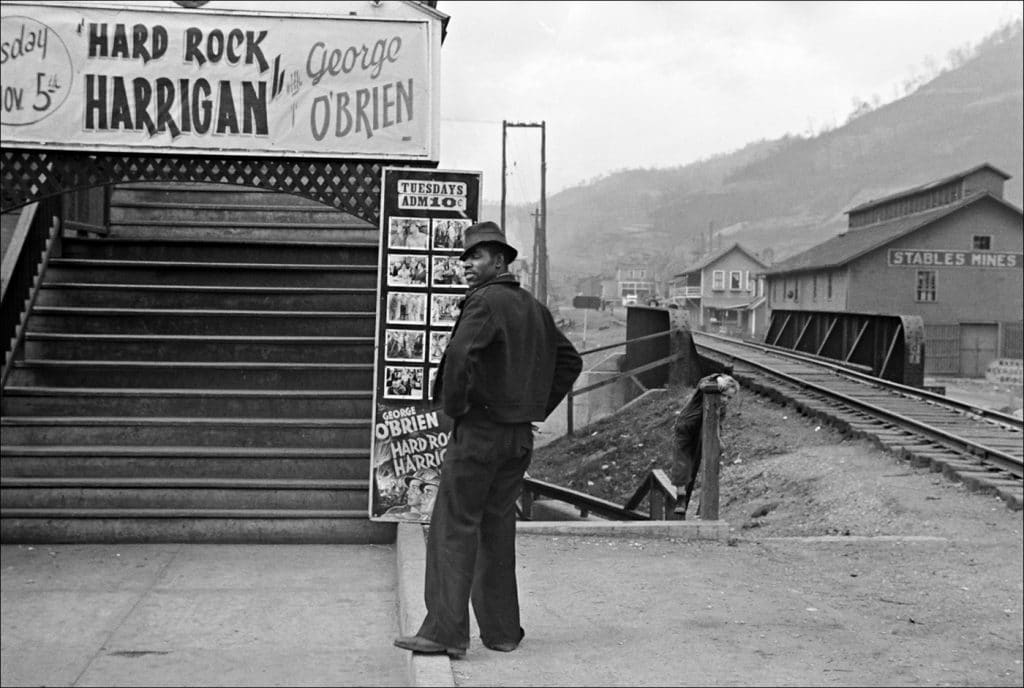
“Omar West Virginia. 1935.”
Photo by Ben Shahn/Farm Security Administration-Office of War Information Photograph Collection Library of Congress.
I was offered this job [at the FSA]… but first it was suggested that I take a trip around the country in the areas in which we worked to see what it’s all about, and I tell you that was a revelation to me.… my knowledge of the United States rather came via New York and mostly through Union Square.… I had desire to go to the United States, [but] I didn’t have a penny. It was in the middle of the Depression, you know. I couldn’t get as far as Hoboken at that time. It was really a very serious time.… the present seemed to be hopeless and I just felt that I’d never get out of New York again.
There’s nothing special about the way that Shahn and Wolcott depicted African Americans. That’s one of the reasons that I like their photos so much. Black people here—Affrilachians—are part of the very fiber of society.
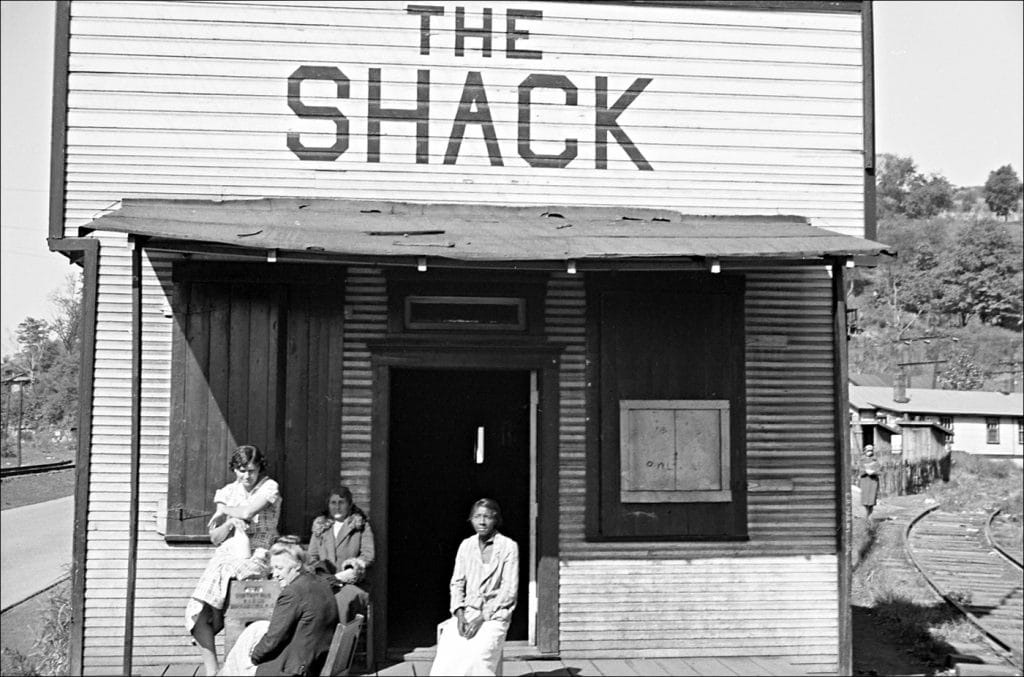
“Untitled. (The Shack a onetime church; milk is dispensed here. Relief clients wait for hours Scotts Run West Virginia. 1935.)”
Photo by Ben Shahn/Farm Security Administration-Office of War Information Photograph Collection Library of Congress.
My wife would do the driving. She was very understanding of the whole thing and just as much enthusiastic about it as I was, so that we’d retrace steps, sometimes 500 miles. I needed something to fill in. I’d missed it and back we’d go. We had a little A Model Ford that we knocked around in. It gave us no trouble but it didn’t have much speed, so going back 600 miles meant almost three days.
—Ben Shahn
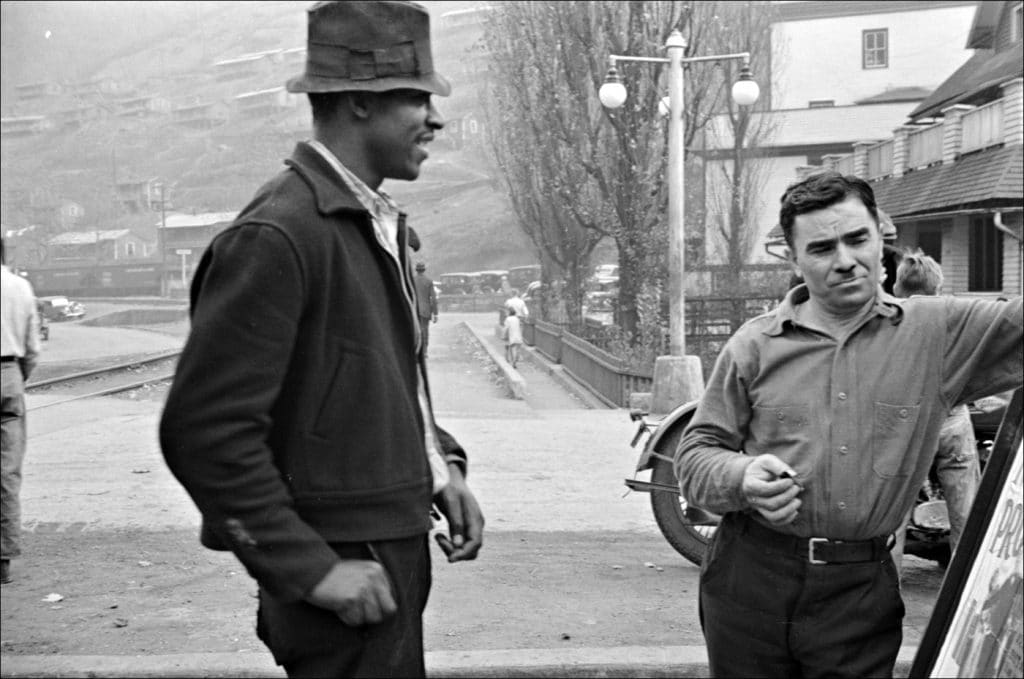
“Untitled. (Omar West Virginia. 1935.)”
Photo by Ben Shahn Farm Security Administration-Office of War Information Photograph Collection Library of Congress.
When I first wanted to take their picture, they would be antagonistic, but as soon as I would explain, or briefly explain what the pictures were for and what I intended, they were cooperative.
—Marion Post Wolcott

“Coal miner’s daughter doing the family wash. All the water must be carried from up the hill. Bertha Hill West Virginia. 1938.”
Photo by Marion Post Wolcott/Farm Security Administration-Office of War Information Photograph Collection Library of Congress.
In the South or in the mine country, wherever you point the camera there is a picture. But here you have to make some choices, you see.
—Ben Shahn
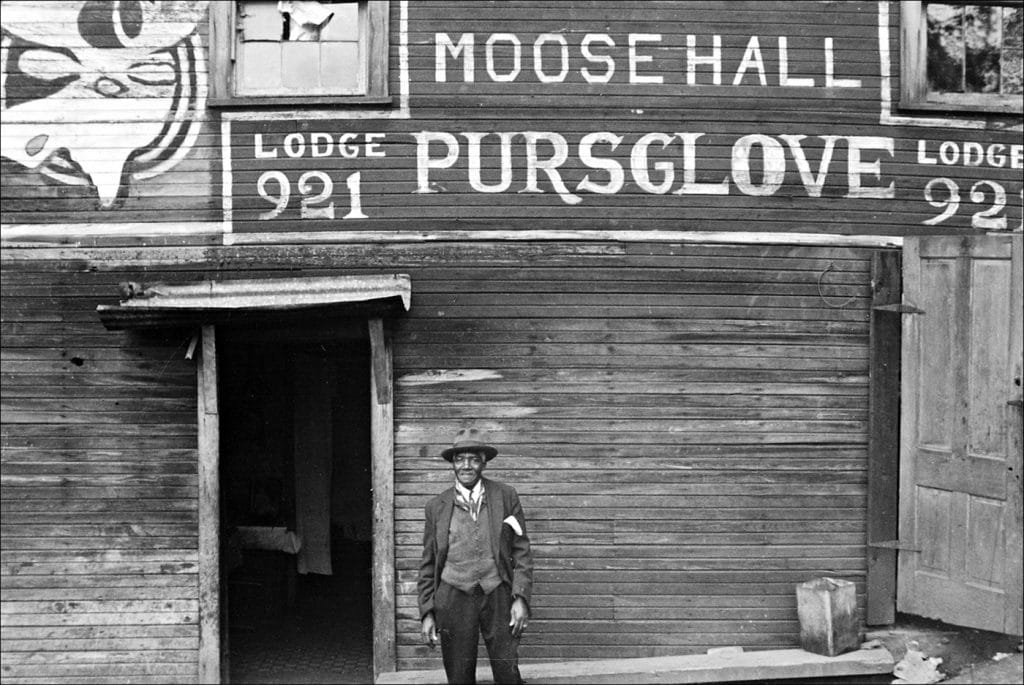
“Liberty unincorporated Scotts Run West Virginia. Negro family living in Moose Hall. 1935.”
Photo by Ben Shahn/Farm Security Administration-Office of War Information Photograph Collection Library of Congress.
It’s possible to look at an isolated photo, out of the hundreds that Shahn and Wolcott produced in Appalachia, and imagine that it merely confirms the stereotype of an impoverished and beaten-down people and region. But that would be wrong. The bodies of work that they produced show people and communities that couldn’t be defined by any single aspect of their lives.
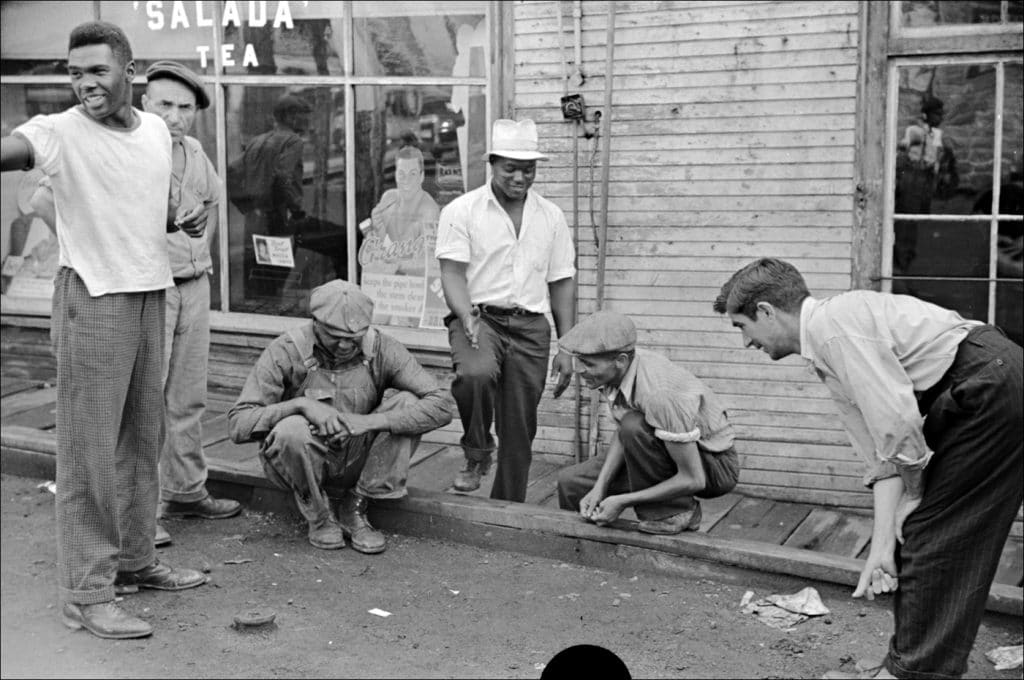
“Untitled. (Shooting craps by company store Osage West Virginia. 1938.)”
Photo by Marion Post Wolcott/Farm Security Administration-Office of War Information Photograph Collection Library of Congress.
It’s tempting to see Shahn’s and Wolcott’s Appalachia as an interracial paradise. It wasn’t. Schools were segregated. African Americans faced discrimination in the workplace, as well.
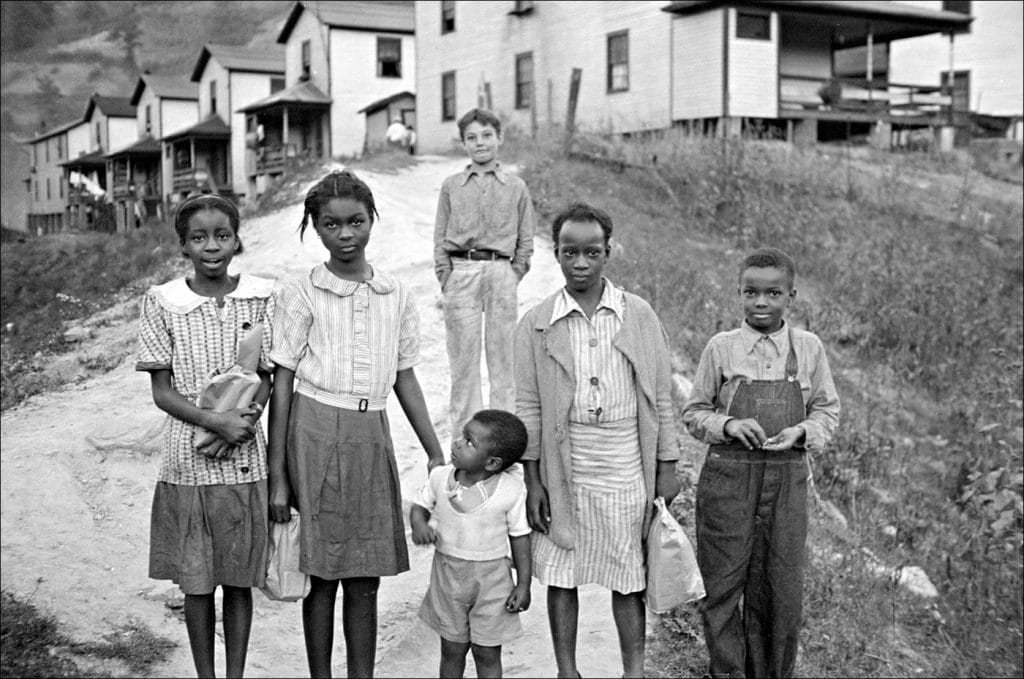
“Omar West Virginia. 1935.”
Photo by Ben Shahn/Farm Security Administration-Office of War Information Photograph Collection Library of Congress.
Yet it’s also clear that Blacks weren’t merely outcasts. They were part and parcel of their communities.
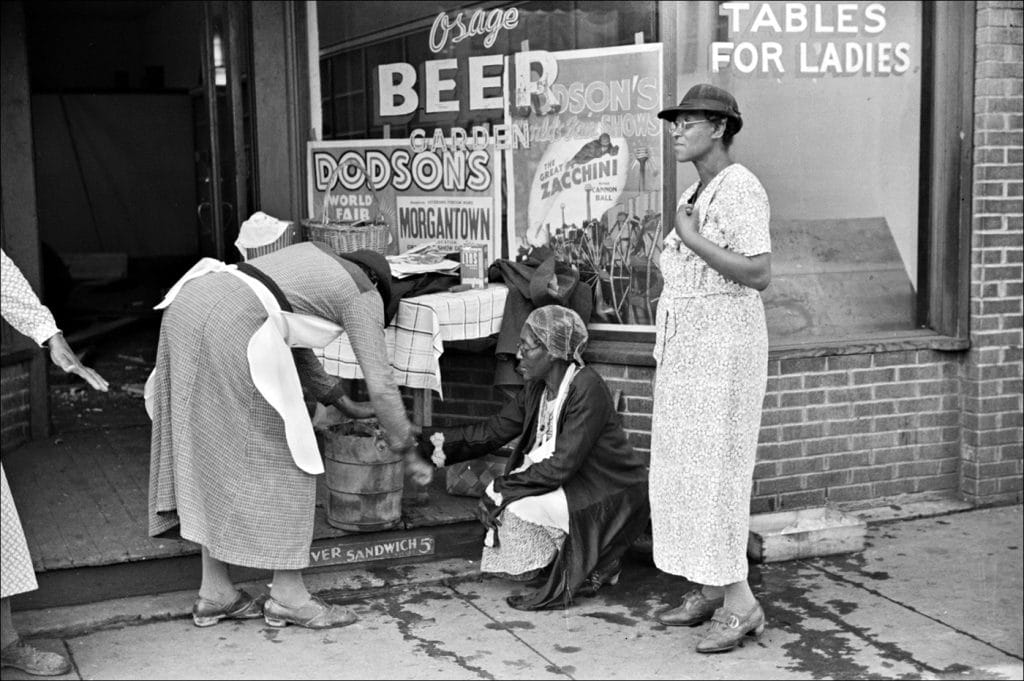
“Coal miners’ wives making ice cream to sell on Saturday afternoon after payday. Osage West Virginia. 1938.”
Photo by Marion Post Wolcott/Farm Security Administration-Office of War Information Photograph Collection Library of Congress.
Neither Shahn nor Wolcott sugar-coated things. Poverty was real. But the people in the photos were always much more than simply poor.
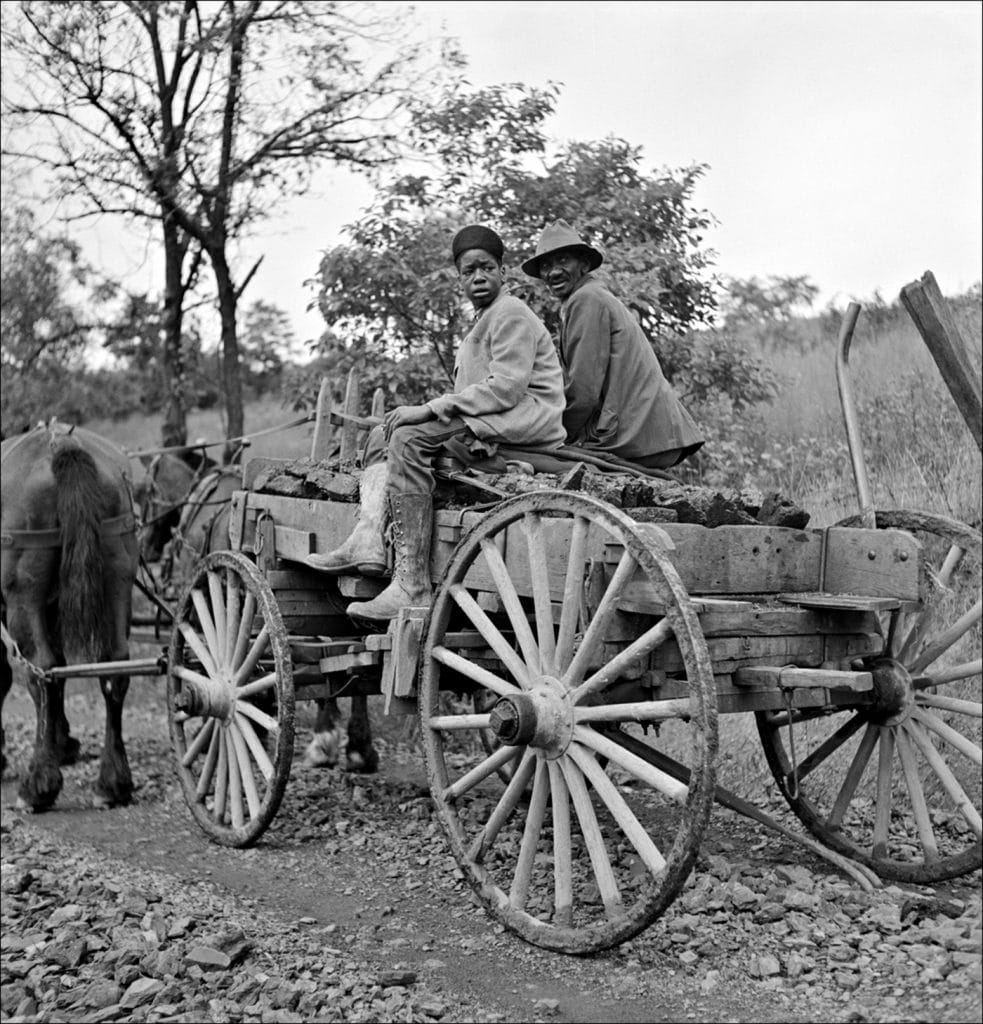
“Hauling coal up the hill picked up near mines to his home. Chaplin West Virginia. 1938.”
Photo by Marion Post Wolcott/Farm Security Administration-Office of War Information Photograph Collection Library of Congress.
Wolcott and Shahn are by no means that only photographers to picture the lives of Affrilachians. The great documentary photographer Lewis Hine did so in the early 20th century, as did Russell Lee, a former FSA photographer, in the 1940s. Recently, photographer and curator Roger May has spearheaded Looking at Appalachia, a photo-documentary project that engages scores of Appalachian photographers in a collective effort to overturn visual stereotypes about the region. Affrilachians appear in many of the images they’ve made.
Why have Affrilachians remained almost invisible in American culture, despite this visual record? Perhaps it’s because, as Nell Irvin Painter has suggested in her introduction to Blacks in Appalachia, Affrilachians upset two cherished stereotypes—that Appalachia is uniformly White and that Black people can be found only in inner cities or what used to be the plantation South. And, because stereotypes help to orient us in a complex world, it can be hard to see them for what they really are. And, so, photographers and writers continue to reproduce myths and stereotypes about Appalachia and African Americans alike. We should demand that they do better.
But we must also ask more of ourselves as viewers and readers. Passive looking and reading is lazy, and it leads us astray. When we see beyond the myths, we find a world that’s infinitely richer and more rewarding than anything we’ve been taught to imagine.
This story was funded in part by a grant from the One Foundation.

